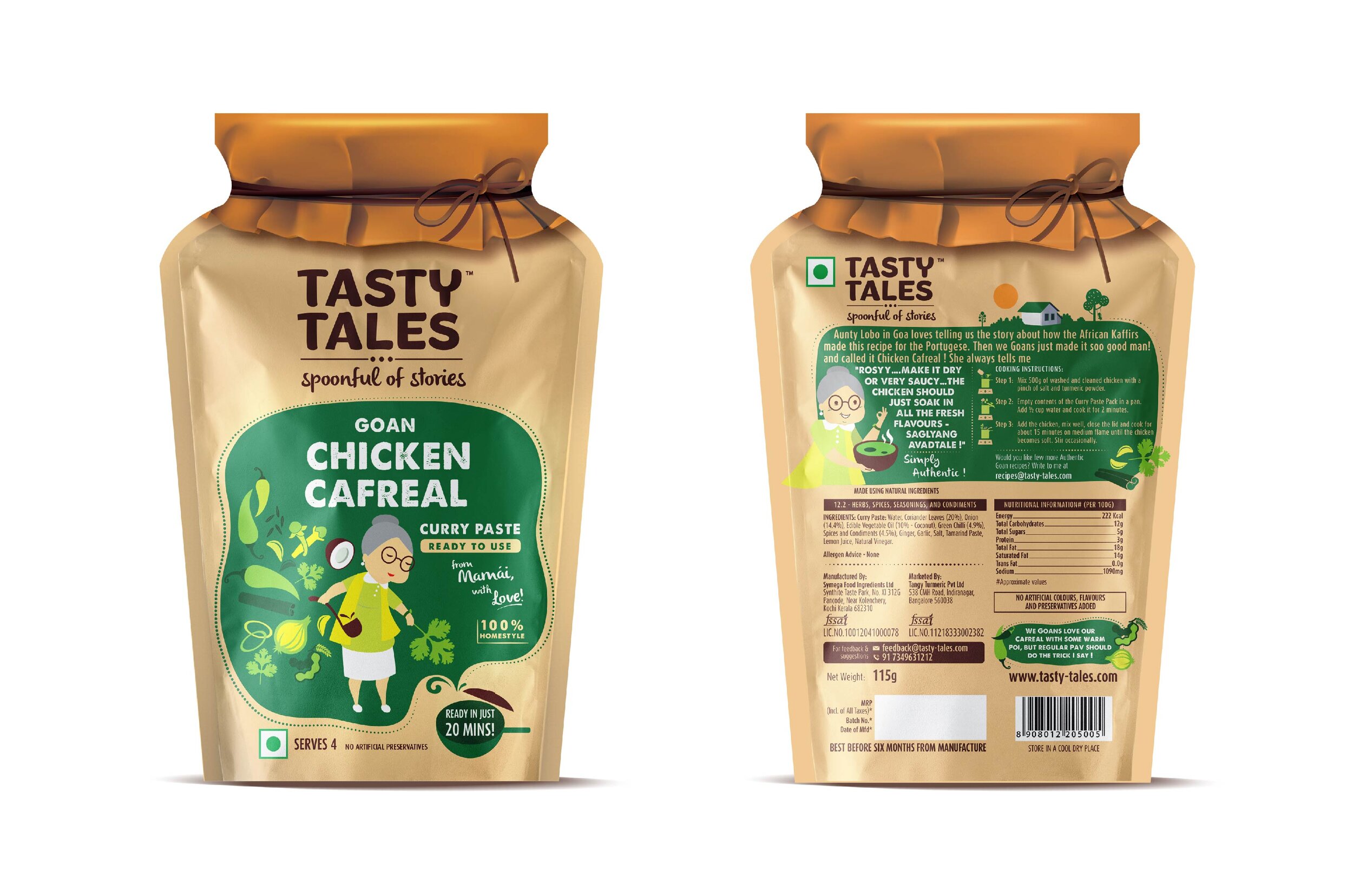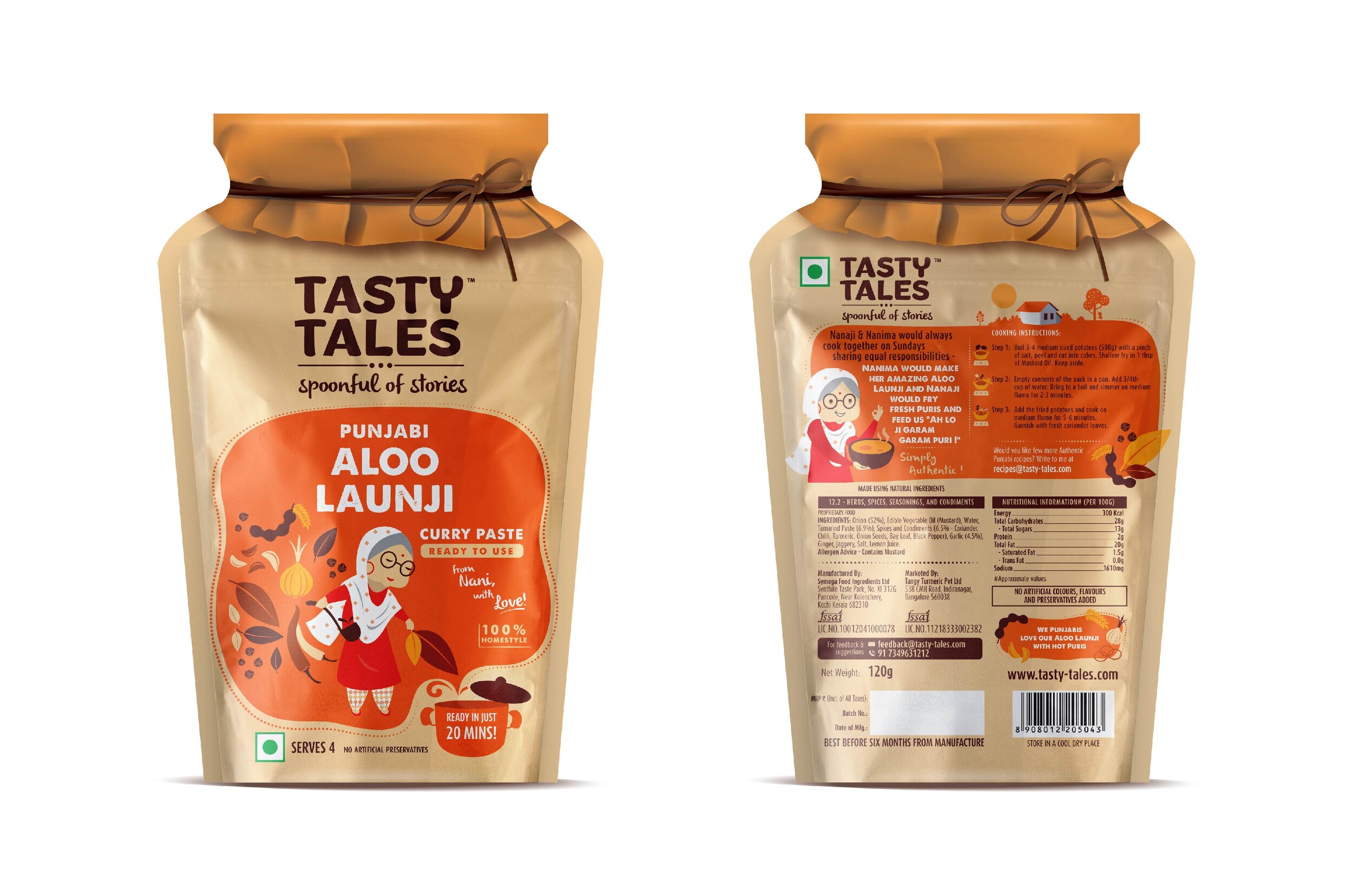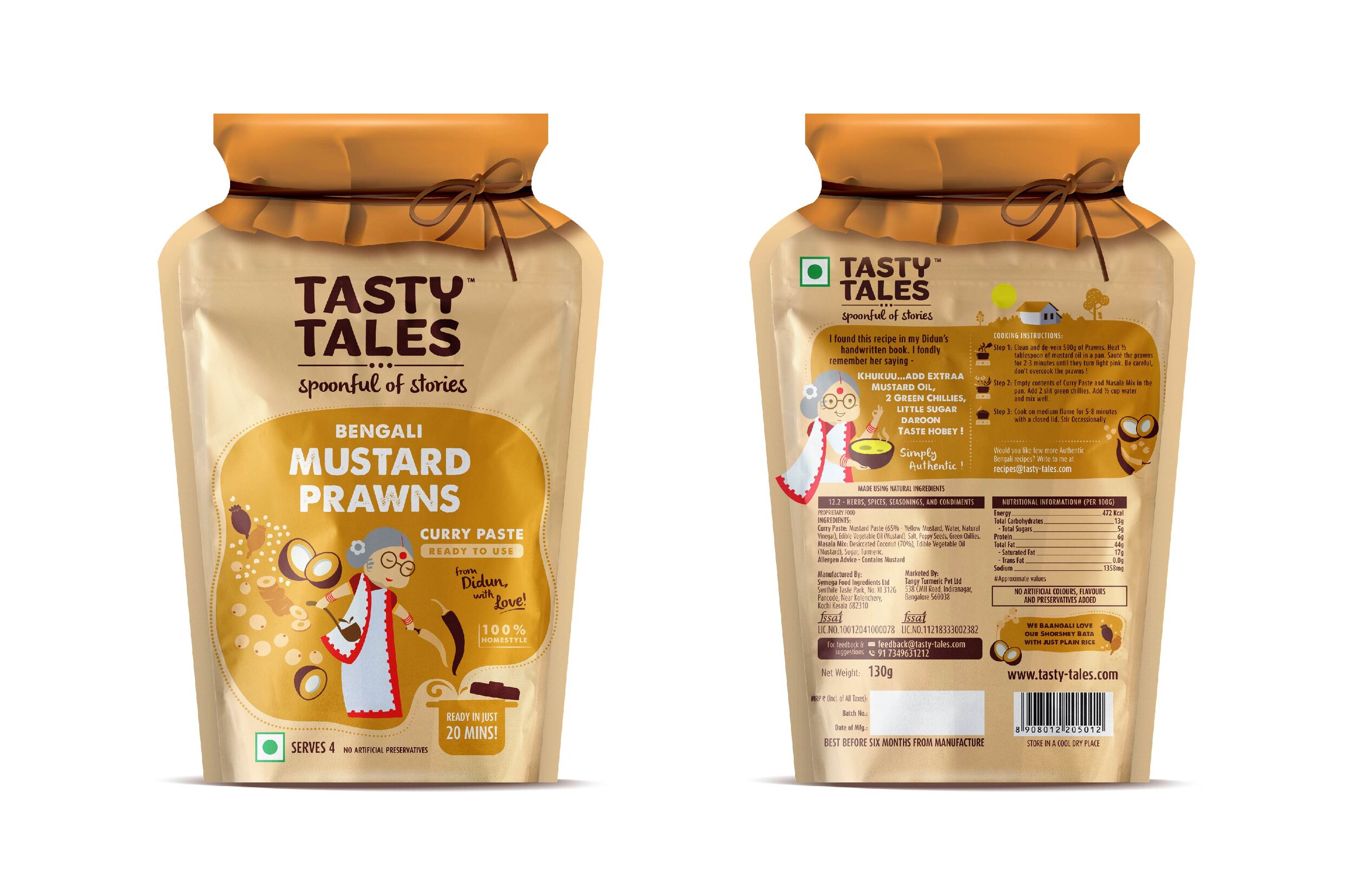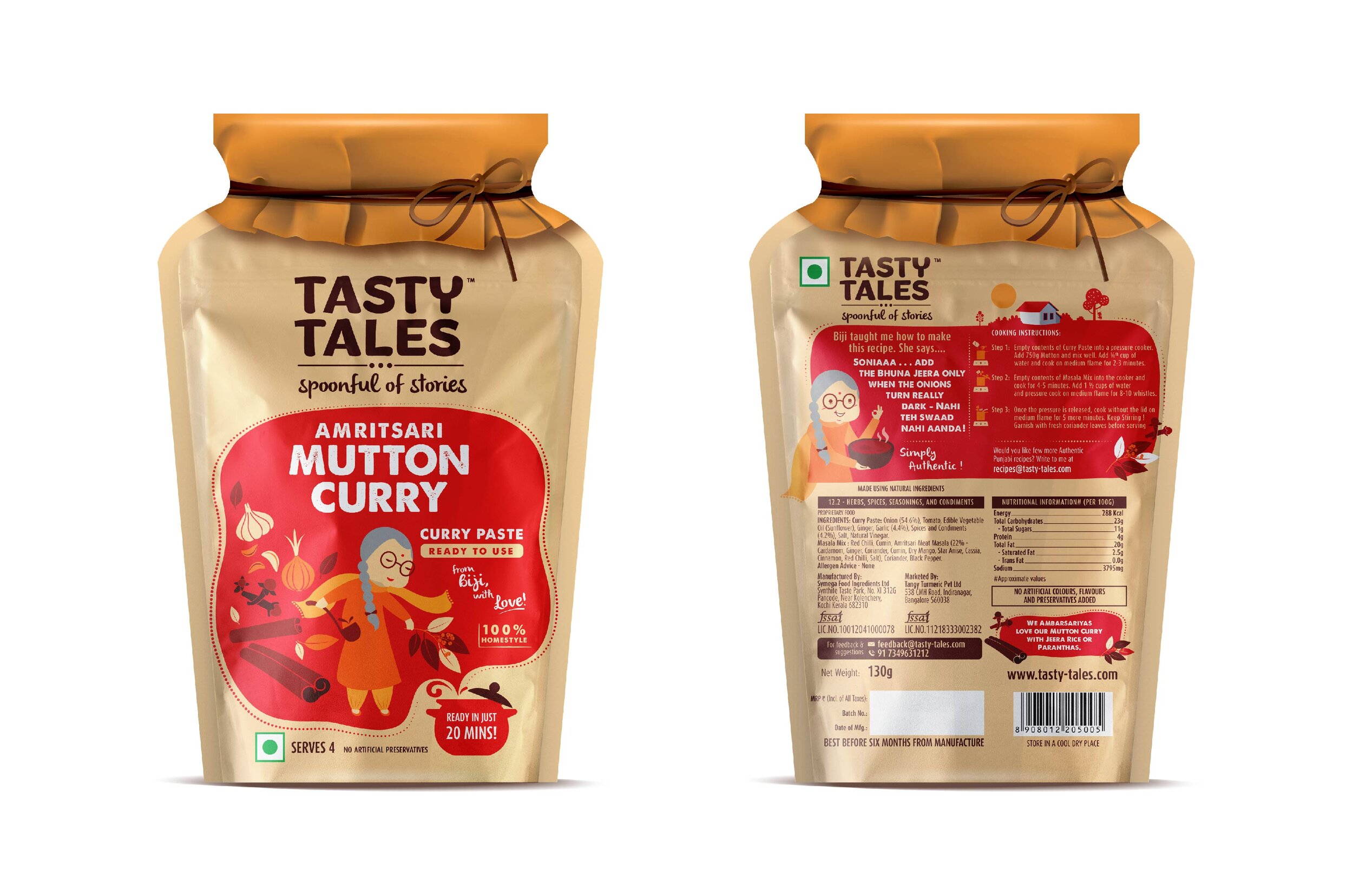The Focus
Envisaging the right nomenclature for a brand that wants to bring traditional, authentic and regional recipes to consumers in a convenient packaged format.
Creating a packaging system for the brand, enabling differentiation and helping it stand out on the shelf
The Design
Elephant worked with Tangy Turmeric, the parent brand to find the right nomenclature.
‘Tasty Tales’ was hence incepted – playing upon the nostalgia of storytelling (passed down through the generations) and combining that with the promise of deliciousness.
Based on the nomenclature, Elephant also designed a packaging system for the products that had strong visual cues for aroma, taste and authenticity – playing on the ‘grandmother’ to be the originator of regionally authentic recipes that are also convenient to execute.
The Story
Tangy Turmeric wished to create a range of products that could cater to those who, for some reason or another, were unable to experience the goodness of home-cooked food. In the traditionally Indian context, Ghar Ka Khaana (as it’s called) is nutritious, wholesome, pure – and most importantly, delicious. But could it also be convenient?
That was how Tasty Tales was born. Their ready-to-cook curry pastes are free of preservatives, which is a double-whammy for their target audience, since the new generation associates packaged food with additives and ‘synthetic’ taste.
Moreover, meticulous research has led them to craft these products in the way they were intended – straight from the grandmothers’ hidden cache of recipes, committed to nothing but memory.
Tangy Turmeric approached elephant for a twofold purpose: One, to design a nomenclature for their products – and two, to create a packaging system for the same. It needed to be different, bold, and induce pickup right off the shelves in an already cluttered market.
“In the traditionally Indian context, Ghar Ka Khaana (as it’s called) is nutritious, wholesome, pure – and most importantly, delicious. But could it also be convenient?”
The Magic in my Grandmother’s Hands
The grandmother is undoubtedly the progenitor of delicious recipes in a traditional Indian household, and this is ubiquitous across the many, many cultures that dot the subcontinent. She has her own formulae which are not to be found in any recipe book or internet resource, but are the result of years of experience, and ingenuity.
The Grandmother, hence, became a central figure in the brand’s identity. Since her recipes would be passed down from one generation to the next in the form of oral storytelling sessions, the team created the nomenclature: ‘Tasty Tales’, and it was met with immediate acceptance. The name was easy on the tongue, had good recall, and represented everything that was nostalgically delicious.
“The grandmother has her own formulae which are not to be found in any recipe book or internet resource, but are the result of years of experience, and ingenuity. Hence, she became a central figure in the brand’s identity.”
But her presence wasn’t simply sidelined there – she also became an integral part of the brand’s packaging system. She took center-stage, in fact, and changed from region to region to reflect the recipe contained within! The Bengali Mustard Prawn Curry Paste, for example, clearly states, ‘From Dida, with love’, as opposed to a Punjabi ‘Nani’, who makes an appearance on the Aloo Launji product.
Wholesome Goodness, Without and Within
The package itself is a stand-up sealable package with an interesting choice of a jar shape, which Elephant helped to enhance. Like one of those porcelain jars found in the days of old, complete with cloth and string graphics, the package hints at the promise of authentic goodness within, while also being convenient for the product.
We knew that the founders of Tasty Tales had really badgered many aunts, grandmothers, mothers and mothers-in-law to create their unique blend.
This uniqueness was showcased by adding a lot of value-driven content on the front and the back of the pack, interspersed with playful graphics, aroma bubbles and other containers for quirky text. Each individual recipe – and in turn, product – got its own distinctive color palette to catalyse association.
The package, all in all, conveyed that with this product, home cooking would be changed forever for the better. It conveyed that the magic of the original recipe that began in the kitchen was still intact inside this package, and lastly, it also appealed to both – those who sought comfort food within their own kitchens, or possessed the desire to be as authentic as possible when cooking different regional specialties.
“Tasty Tales’ uniqueness was showcased by adding a lot of value-driven content on the front and the back of the pack, interspersed with playful graphics, aroma bubbles and other containers for quirky text.”










